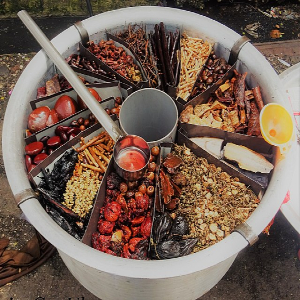Novel Coronavirus disease (COVID-19): physiology to pathophysiology and therapeutics including herbal medicines

Accepted: 4 May 2023
All claims expressed in this article are solely those of the authors and do not necessarily represent those of their affiliated organizations, or those of the publisher, the editors and the reviewers. Any product that may be evaluated in this article or claim that may be made by its manufacturer is not guaranteed or endorsed by the publisher.
Authors
COVID-19 emerged as a public health emergency of international concern in 2019 and spread globally. The spectrum of the diseases varied from asymptomatic to severe, even resulting in mortality. Gender and pre-existing co-morbidities were identifiable risk factors. Diabetes, hypertension, and chronic respiratory and cardiovascular diseases pose a risk of severe infections and manifestations. The vulnerability was due to ACE 2 receptors, thereby enhancing the entry and subsequent multiplication of the virus. Immune responses acted as the two-way sword, with cytokine storms posing a risk of severe complications. COVID-19 is also associated with long-term effects varying from neuropsychiatric to other complications. Mutations are expected to pose a challenge in the future. The second wave was also related to fungal infections due to varied causes like side effects of treatment and opportunistic infection due to immune suppression from using steroids. Naturopathy is also expected to work wonders. However, scientific and evidence-based results are required. COVID combat requires a multi-level approach. Nutrition and strict adherence to health and hygiene are essential preventive strategies.
How to Cite

This work is licensed under a Creative Commons Attribution-NonCommercial 4.0 International License.
PAGEPress has chosen to apply the Creative Commons Attribution NonCommercial 4.0 International License (CC BY-NC 4.0) to all manuscripts to be published.
Similar Articles
- Harish Gugnani, Dermatophytes, dermatophytosis in the Caribbean and potential for herbal therapy , Infectious Diseases and Herbal Medicine: Vol. 1 (2020)
- Ghazal Rahimzadeh, Abdullatif Tay, Joe Mac Regenstein, Asad Rokhzadi, Hossein Dabiri, Evaluation of microbial and sensory properties of flavored yogurt drink produced by Noaea mucronata and liquid smoke treatment , Infectious Diseases and Herbal Medicine: Vol. 1 (2020)
- Siukan Law, Licorice and its applications for SARS-CoV-2 , Infectious Diseases and Herbal Medicine: Vol. 3 (2022)
- Siu Kan Law, Is photodynamic therapy with curcumin suitable for combating monkeypox? , Infectious Diseases and Herbal Medicine: Vol. 4 (2023)
- Dronesh Chettri, Current status and future challenges of avian influenza – a literature review , Infectious Diseases and Herbal Medicine: Vol. 5 (2024)
- Dr. Dronesh Chettri, The emergence of Monkeypox Virus: its complications, connection with smallpox and its future aspects - a short review , Infectious Diseases and Herbal Medicine: Vol. 5 (2024)
- Muhammad Awwal Tijjani, Mohammed Garba Magaji, Abdullahi Hamza Yaro, Hamidu Usman, Aishatu Muhammad, Sani Sa'idu Bello, Chinwe Euphemia Egwu, Zainab Mohammed Chellube, Behavioural studies on crude Ethanol leaf extract of Cadaba farinosa Forssk. in mice , Infectious Diseases and Herbal Medicine: Vol. 3 (2022)
- Shafiul Azam Zishan, Md. Ishtiaque Uddin, Jannatul Naima, Sadab Ibban, Conventional medicines used for kidney protection in Bangladesh: a review , Infectious Diseases and Herbal Medicine: Vol. 4 (2023)
- Bernard K. Turkson, Desmond Nkrumah, Reinhard Isaac Nketia, Alfred Ofori Agyemang, Isaac Kingsley Amponsah, Burnett Tetteh Accam, Merlin L.K. Mensah, Yvonne Boateng, Antimicrobial activity, toxicity and retrospective clinical effectiveness of Kantinka BA and Kantinka Herbaltics, two multi-component-herbal products used in the management of infectious diseases in Ghana , Infectious Diseases and Herbal Medicine: Vol. 5 (2024)
You may also start an advanced similarity search for this article.

 https://doi.org/10.4081/idhm.2023.313
https://doi.org/10.4081/idhm.2023.313



